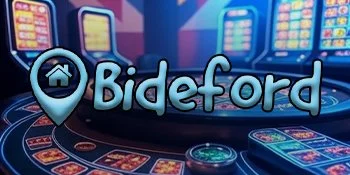Jack Campbell Live in Concert
Sounding Bombe: Enigma Project
Jack Campbell Live in Concert
"A journey from electro-mechanical computation to electro-acoustic composition, this 50 minute piece of music for violin and found-sound is the accumulation of five years of study and discovery. Written in collaboration with the National Museum of Computing in Bletchley, UK, this piece uses the beauty of music to celebrate scientific evolution and revolution and the human spirit’s resistance of evil and tyranny.”
This tour will showcases Campbell’s long term project “Sounding Bombe: Enigmatic Music” a musical/compositional work based upon the mathematics which were used to crack the enigma code during the second world war. Written in collaboration with the National Museum of Computing in Bletchley Park UK, it is a work of historical reflection, and musical representations of mathematical concepts while celebrating the technological triumphs of the past using creative work of beauty and interest. It is a celebration of: the relationship between electro mechanical computation and electro acoustic composition; memorializing the memory of the Second World War at the 80th anniversary of its end; and exploring how the development of AI and computerized mechanics will transform our world.
This project for violin and electronics was written in collaboration with The National Museum of Computing in the UK.
DETAILS
Friday, April 11, 2025
Time: Doors open at 6:30pm; Performance begins at 7 - 8pm; Doors close at 9pm
Location: Gallery 881, 881 East Hastings, Vancouver
Parking: Plenty of free street parking in front and across from the gallery
Drinks: Available for purchase.
Cost: $30 in advance / $35 at the door
Tickets are limited and available on a first come, first served basis.
***
I believe that music serves three inherent functions:
• To memorialize and contextualize history
• To, in the same fashion as a scientist, provide a canvas on which to explore the breadth of the human imagination
• To encourage and cherish connection, innovation, and intellectual progress
Over the last five years, I have built computational machines and mechanism that are musical equivalents of the enigma and bombe machines. The computational mathematics and computational mechanics of encryption are precisely the same as the original historic machines which are celebrated in this museum. The difference is that instead of encrypting language, these machines encrypt music. The musical alphabet and keyboard have been adopted over from primary alphabetic characters to musical pitches: this has been created by the analysis of statistical linguistic data in frequency, use, and purpose, between the notes and keys of music, and the usages of letters within the German language.
This musical enigma machine then generates musical pitch, melodies, harmonies, and forms, simply by imputing a melody of choice, and letting the musical enigma machine transform it through all it's various devices of encryption. Once at the highest level of encryption, these musical structures are then deconstructed by plugging them through the musical bombe machine. Both the processes of musical encryption and decryption, with all the various transformations undergone in that process, play out musically across this piece. Also included within this work are recordings of the mechanical noises made by the enigma and bombe machines. It is a relatively unknown fact that Alan Turing himself designed the world's very first device for generating computer music. I have taken these found sound recordings of the bombe and enigma machines and musically manipulated them using sound softwares directly stemming from Turing's musical inventions. While the violin plays the enigma/ bombe constructed pitches, the computer backing track will play sonically designed enigma/bombe recordings made using Turing's invention's decedents.
Please note that the piece starts with highest level of encrypted musical complexity at the apex of the musical enigma's work, and you will slowly hear this encryption unravelled by the musical bombe, until at the end of the piece, we are left with the simple musical melody that was originally encrypted. I invite you to try and listen to the melody as it is unravelled, and hear the patterns of pitch that emerge. It is also fun to note that the rhythms you hear the violin play at the beginning of the piece are those musical pitches' phonetic alphabetical equivalents in the natural rhythms of morse code. The melody which I have chosen to encrypt which you will hear finally unveiled atthe end of the piece is the traditional song "Molly Malone," which was Alan Turing's favourite piece of music. Turing himself was a violinist. The story goes that when the police came to take him away, he was sitting playing this piece on the violin...
The rotors and plugboard and other encryption devices of the enigma machine are set to the exact historical settings of the 18th of October, 1944. October 18th was the day on which I finished the piece, it is one of the very few days of the war for which we know the exact historical settings of the enigma machine, and it is the day on which the Nazi's executed Victor Ullman, one of the greatest composers. This is a thematic tribute to the brutal fates suffered by artists during the war for pursing freedom of intellect, and an acknowledgment that the work done by the Bletchley Park team helped allow for a world where the majority of musicians, like me, can continue to express ourselves freely.
Finally, the musical form of this piece is that of an Agnus Dei. An Agnus Dei is an ancient musical form; Agnus Dei is also the codename of the first Turing/ Welchman Bombe Machine. I could not be more grateful to be sharing this project, of which I am so proud!
This concert will be the Vancouver stop of its 2025 Canada, USA, UK Tour.








